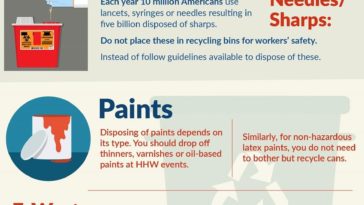Picking The Perfect Dumpster Dimension For Your Project: An In-Depth Overview
Picking The Perfect Dumpster Dimension For Your Project: An In-Depth Overview
Blog Article
Article By-Swain Hahn
When starting a task that requires a dumpster, the size you choose can substantially impact its effectiveness and cost-effectiveness. Visualize having the ideal container that accommodates all your waste without being excessively huge or too little. All of it begins with understanding the subtleties of your job and choosing a dumpster dimension that lines up with your details demands. So, prior to you make a decision, think about the elements at play to make sure a seamless waste administration procedure from beginning to end.
Variables to Take into consideration
When selecting the ideal dumpster size, there are several essential aspects to think about.
Initially, consider the kind of waste you'll be throwing away. click for more may require differing quantities of room, so recognizing what you'll be putting in the dumpster is critical.
Next off, assess the quantity of waste you expect to produce. If you ignore the volume, you might need to make several journeys to dispose of whatever, which can be troublesome and costly. On please click the following internet page , renting out a dumpster that's as well large can bring about unnecessary expenditures.
Furthermore, take into consideration the space where the dumpster will certainly be placed. Guarantee there's enough area for the dumpster to be provided and grabbed with no obstructions.
Finally, consider any weight limitations that may use. Surpassing the weight restriction can cause extra fees or even the rejection of service.
Dumpster Size Alternatives
For picking the appropriate dumpster size, it's important to have a good understanding of the readily available options. Dumpster dimensions commonly vary from 10 to 40 cubic lawns, with variations in between.
A 10-yard dumpster is suitable for little tasks like a garage cleanout or a small improvement. If you're dealing with a medium-sized task such as a kitchen area remodel or a basement cleanout, a 20-yard dumpster could be the best selection.
For check over herea like a whole-house restoration or industrial building and construction, a 30 or 40-yard dumpster could be preferable to fit the volume of waste created.
When selecting a dumpster size, consider the amount and type of particles you anticipate to take care of. It's better to choose a somewhat larger dimension if you're uncertain to prevent overfilling. Bear in mind, it's even more cost-effective to rent out a dumpster that fits your needs as opposed to needing to buy an additional one.
Matching Dimension to Job
Ideally matching the dumpster dimension to your task is vital for efficient waste administration. To establish the ideal size, think about the scope and nature of your job.
For little home cleanouts or restorations, a 10-yard dumpster may be adequate. These are typically 12 feet long and can hold around 4 pickup truck lots of waste.
For larger projects like redesigning multiple areas or clearing out a big estate, a 20-yard dumpster might be preferable. These are around 22 feet long and can hold about 8 pickup truck loads.
If you're dealing with a significant building task or industrial remodelling, a 30-yard dumpster could be the most effective fit. These dumpsters have to do with 22 feet long and can accommodate regarding 12 pickup loads of particles.
Matching the dumpster size to your job ensures you have enough area for all waste materials without overpaying for extra capability.
Verdict
To conclude, selecting the best dumpster size for your project is essential for efficient waste disposal. By considering aspects like the kind and amount of waste, room accessibility, weight restrictions, and budget restrictions, you can guarantee you have the ideal size dumpster for your needs. Ensure to match the size of the dumpster to the scope and nature of your task to prevent overspending on unneeded costs.
